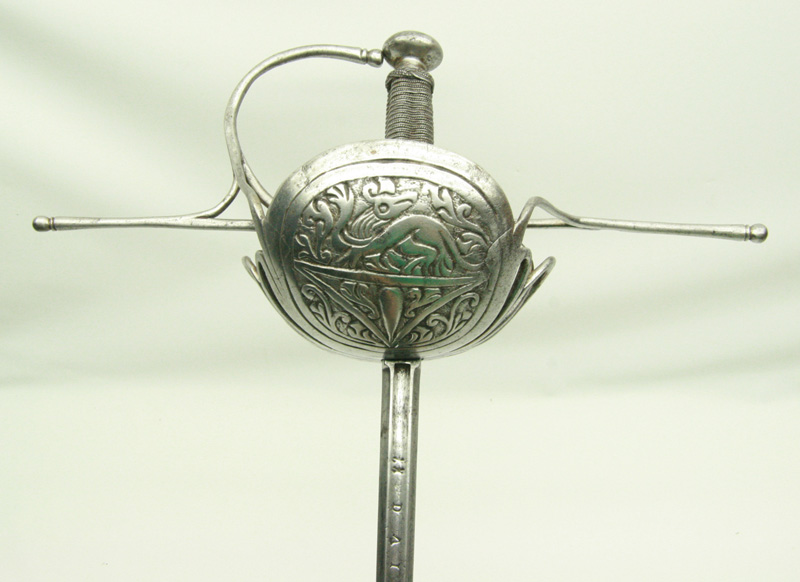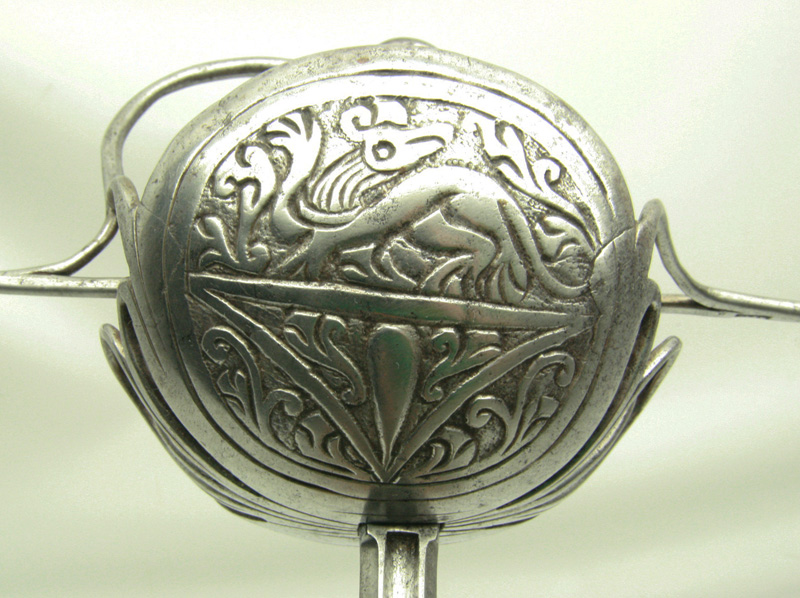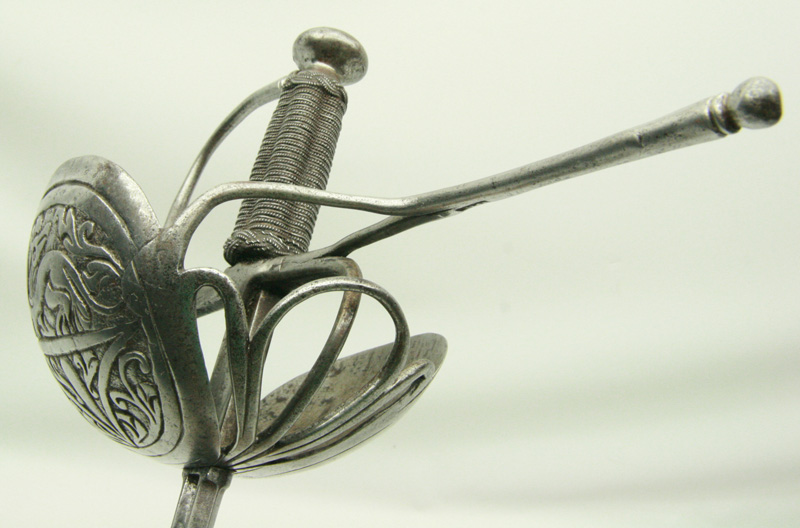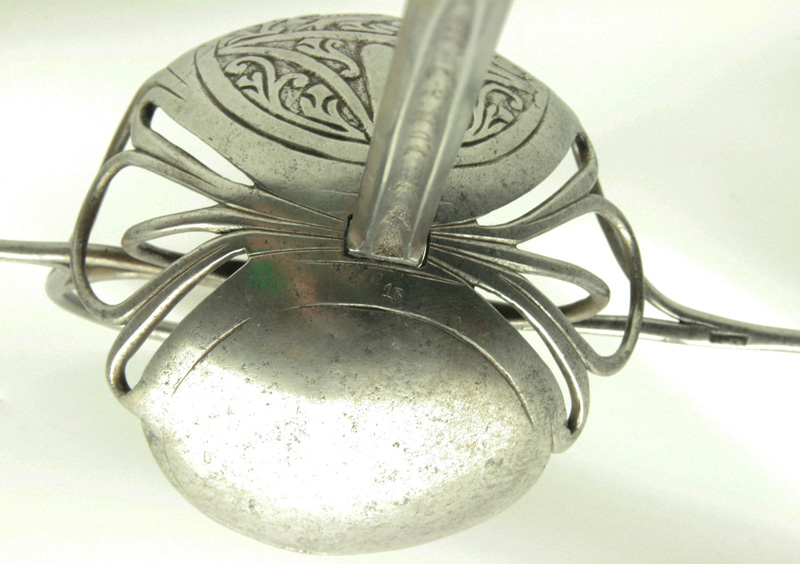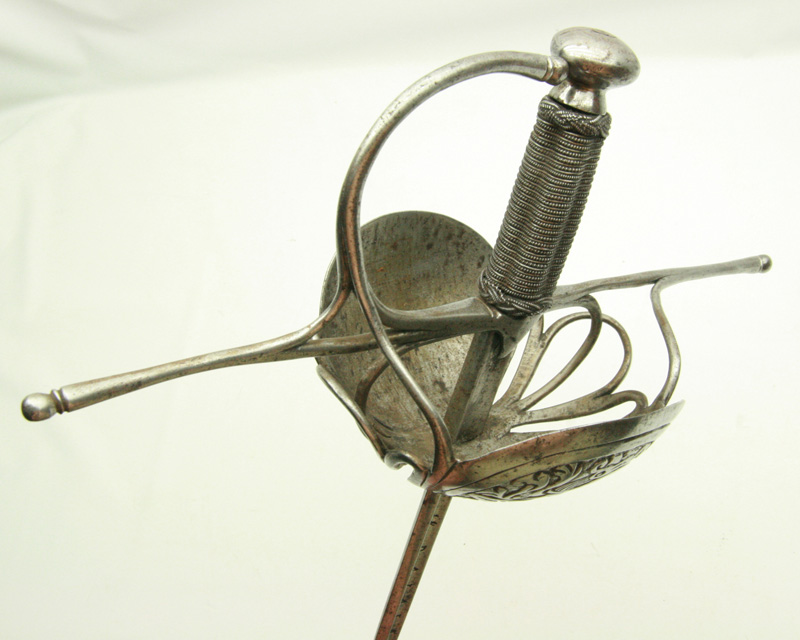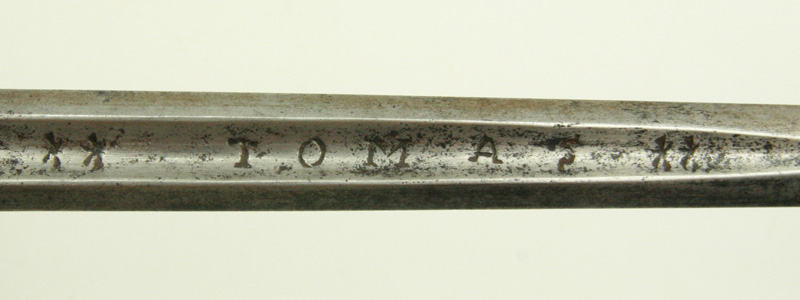I just acquired this Spanish espada de conchas ca.1670, and wanted to share some photos with you. Any input and questions are appreciated and welcome.
The front shell has a stylized depiction of the Spanish Lion, in a typical, almost abstract style [Picasso didn't really invent it300 years later]. Blade is 101 cm long, sword weighs 935 gr.
Blade is marked Tomas DAiala, but was not made by this famous Toledo swordsmith. As is well known, Ferrara, Piccinino, Aiala, etc., became trade names, and a sign of alleged quality.
Hopefully the detailed photos of the hilt will help better understand the construction of it.

